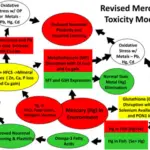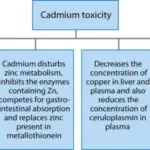Arsenic is highly toxic in its inorganic form. Arsenic toxicity may occur due to elevated levels of arsenic in the body. Arsenic may cause disease by using contaminated water for drinking, food preparation, and irrigation of food crops.
What is the Pathology of Arsenic Toxicity?
The pathology of arsenic toxicity is:
-Etiology: The cause of arsenic toxicity is deleterious effects on cellular metabolism.
-Genes involved: None.
-Pathogenesis: The sequence of events that lead to arsenic toxicity shows vascular endothelial dysfunction as it inactivates endothelial nitric oxide synthase, leading to a reduction in the generation and bioavailability of nitric oxide.
-Morphology: The morphology associated with arsenic toxicity shows cascade mechanisms of free radical formation derived from the superoxide radical, combined with glutathione-depleting agents, increasing the sensitivity of cells to arsenic toxicity.
-Histology: The histology associated with arsenic toxicity shows cutaneous lesions in the form of melanosis, keratosis, and neoplastic changes.
How does Arsenic Toxicity Present?
Patients with arsenic toxicity typically are typically males. The symptoms, features, and clinical findings associated with arsenic toxicity include vomiting, abdominal pain, encephalopathy, and watery diarrhea that contains blood, heart disease, numbness, and cancer.
How is Arsenic Toxicity Diagnosed?
Arsenic toxicity is diagnosed by testing the urine, blood, or hair
How is Arsenic Toxicity Treated?
Arsenic toxicity is treated with chelation therapy and nutritional supplements.
What is the Prognosis of Arsenic Toxicity?
The prognosis of arsenic toxicity is good if treated earlier, however, long-term effects are irreversible.



